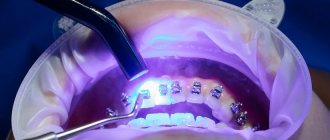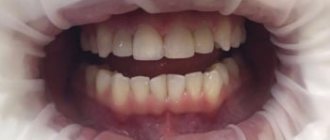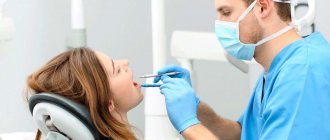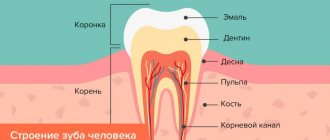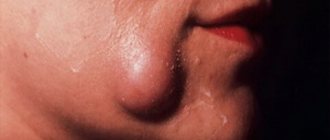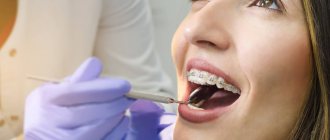Most people aged 17-27 years old face problems caused by the appearance of a wisdom tooth (the so-called third molar or eight). Sometimes it can erupt at a later period. Almost 10% of people do not have them at all, and in a third, they remain in the jaw all their lives in the form of embryonic anlages, never appearing.
However, this process is not always accompanied by pain, discomfort and other problems. Quite often they erupt successfully and retain their chewing function for many years without showing any signs of carious lesions.
What to do if teething still causes discomfort: treat it or is it better to resort to removal? These and other questions will be discussed later in the article.
Causes of high blood pressure
High blood pressure is divided into 2 types:
- primary (essential) hypertension (or hypertension) is the most common type of high blood pressure, often has no cause, develops over many years, the risk increases with age;
- secondary hypertension occurs against the background of the development of any disease (kidneys, endocrine system organs, sleep apnea) or taking certain medications.
Causes of high blood pressure include:
- old age (the older a person is, the higher the likelihood of developing hypertension);
- family history of the disease (high blood pressure in parents or other close relatives);
- unhealthy diet - diet high in salt and fat;
- lack of physical activity;
- overweight, obesity;
- sleep disorders;
- chronic diseases (chronic kidney disease, endocrine disorders, diabetes, high cholesterol);
- race (eg, African Americans have a higher risk);
- gender (in middle age, high blood pressure develops more often in men, in old age - in women; women who had high blood pressure during pregnancy are more prone to arterial hypertension in old age);
- certain medications (contraceptives, decongestants, NSAIDs, antidepressants);
- stress;
- smoking;
- alcohol abuse;
- non-compliance with sleep schedule, night shift work.
High blood pressure is often called the “silent killer” due to its lack of noticeable symptoms. In some cases (especially when blood pressure levels reach dangerously high levels), a person may complain of headache, nosebleeds, and shortness of breath. Many people do not associate these symptoms with abnormal blood pressure readings because they are not in the habit of periodically monitoring their blood pressure with a doctor or at home.
Undesirable effects of other Russian vaccines
"CoviVac"
This is an inactivated vaccine. That is, a killed coronavirus is delivered to the body. This is an old and proven technology, many vaccines against viral diseases have been made using it: polio, influenza and others. Dead viruses cannot cause disease, but their entry is enough for the body to learn to recognize them. As a result, when a live virus enters from an infected person, a strong immune response is formed immediately.
To enhance the immune response, aluminum hydroxide was added to CoviVac. One dose contains up to 0.5 mg. This dose is much less than permissible.
The instructions for the drug say that the vaccine can rarely cause headaches and short-term fever. Pain and hardness at the injection site are more common.
"EpiVacCorona"
This vaccine differs from Sputnik V and CoviVac in that it is not created using viruses. It is not killed or neutralized virus particles that are introduced into the body, but artificially created proteins. Using them, the immune system is trained to recognize real viruses. This method of creation reduces the reactogenicity of the vaccine, so it is recommended for vaccination in elderly or weakened people.
In a publication in the Russian journal Infection and Immunity, the vaccine developers claim that the only adverse events were mild pain at the injection site. And the CoviVac vaccine does not cause headaches, muscle weakness and other common symptoms.
Blood pressure readings
- Normal pressure is from 90/60 mm Hg. Art. up to <120/80 mmHg Art.
- Prehypertension (risk factor for the development of arterial hypertension) - 120–129 mm Hg. Art. / <80 mmHg Art.
- Arterial hypertension 1st degree - 130–139 mm Hg. Art. or 80–89 mm Hg. Art.
- Arterial hypertension 2 degrees - ≥140 mm Hg. Art. or ≥90 mm Hg. Art.*
*American Heart Association classification.
Online blood pressure calculator on the NHS website.
American College of Cardiology online cardiovascular risk (stroke, heart attack and other diseases) calculator (risk of complications for patients with high blood pressure over the next 10 years and beyond).
Common problems that can be caused by wisdom teeth
Most often, problems that arise during the period when eights emerge from the gums are due to the fact that by the time they appear, a person has already formed strong bone tissue, and there is practically no room left for them in the jaw. All this significantly complicates the process of growth and eruption.
A tooth appearing in an already formed jaw can cause the following problems:
- Development of periconaritis. The peculiarity of this pathology is the formation of a “hood”. In addition to the pain that occurs when food gets on the gums and irritates the nerve endings, pathogenic bacteria accumulate in the “hood”, which can cause inflammatory processes in the oral cavity.
- Cyst formation. Dense gum tissue and the space constrained by the formed jaw forces the erupting tooth to grow in the direction of least resistance. Because of this, its roots can grow into the cavity of the maxillary sinus, forming cysts that become infected, inflamed and remain the cause of toothache for a long time.
- Incorrect position in a row (dystopia). As the third molar grows, it can displace teeth that have already erupted. This disrupts the bite and deforms neighboring teeth.
- Caries formation. Eights cause certain difficulties in daily care, as they are located too deep in the oral cavity. Due to poor hygiene, food particles and bacteria accumulate on their surface, creating a favorable environment for the development of infectious processes.
- Damage to the root of an adjacent tooth. During eruption, the third molar puts pressure on the adjacent tooth, thereby damaging its root. This can provoke an inflammatory process or degeneration of dental tissue.
- Incomplete eruption (retention). Impacted third molars can cause quite a lot of problems - they often cause inflammation of the gums and diseases of adjacent teeth.
If the above problems appear, the dentist may recommend resorting to their removal without waiting for the development of more serious complications.
How often should you check your blood pressure readings?
Blood pressure is usually measured when visiting a doctor (for example, a therapist). There is no need to specifically visit a specialist for this; it is enough to ensure that the pressure is measured at least once every 2 to 5 years, starting from the age of 18 (with normal blood pressure and no increased risk of cardiovascular diseases).
People over 40 years of age, and people 18–40 years of age at risk of high blood pressure, should have their blood pressure checked at a healthcare facility at least once a year. If a diagnosis of arterial hypertension has been established or a person has other risk factors for developing cardiovascular diseases, it is recommended to measure blood pressure more often and not neglect monitoring at home. Your doctor will help you choose a device for measuring blood pressure (tonometer).
For children 3 years of age and older, blood pressure is measured regularly during annual routine examinations.
Caution: The American Heart Association does not recommend the use of wrist- or finger-worn blood pressure monitors, which are less accurate.
If recommended, measure blood pressure at home twice a day on the left and right arm: in the morning before breakfast (but not immediately after waking up) and before taking any medications, and in the evening, preferably at the same time. In each case, you need to measure the pressure 2-3 times (at short intervals, 1-3 minutes) for a confident, accurate result. 30 minutes before, do not smoke, do not eat, do not drink coffee (and alcohol), do not exercise, and empty your bladder. During the measurement, you must sit in a comfortable position, leaning back in a chair or armchair, do not cross your legs and ankles, and do not talk. The arm on which the cuff is worn must be freed from clothing and held at heart level; it is most convenient to place it on a table or armrest of a chair. Don't forget to write down your measurement results.
What are wisdom teeth?
Dentists and scientists call them a vestigial organ, the need for which disappeared when people learned to heat food. Eights, like all other human teeth, consist of roots, a neck and a crown, but despite this they have certain anatomical features.
Here are the main differences:
- they are only indigenous and do not come in milk;
- their eruption is often accompanied by pain;
- have a larger number of roots - from 2 to 5;
- bent and twisted roots.
Is it possible to normalize high blood pressure and what to do?
Yes, with the help of lifestyle modification (influencing modifiable factors), treating the underlying disease, taking medications that normalize blood pressure.
Lifestyle modifications include proper nutrition, including avoiding fatty foods and reducing salt intake (the DASH (Dietary Approaches to Stop Hypertension) eating plan recommended by the US National Heart, Lung, and Blood Institute is preferred); weight normalization; quitting smoking and alcohol; regular physical activity; stress management (for example, mastering relaxation techniques).
If you have persistently high blood pressure due to a medical condition (such as diabetes) or caused by taking certain medications, it is recommended that you consult your doctor. Control of the underlying disease, refusal of drugs (or their replacement) that increase blood pressure, make it possible to stabilize the patient’s blood pressure and condition.
Nonmodifiable risk factors associated with high blood pressure include age and family history.
Pain in the temple area
Arthritis
21224 October 28
IMPORTANT!
The information in this section cannot be used for self-diagnosis and self-treatment.
In case of pain or other exacerbation of the disease, diagnostic tests should be prescribed only by the attending physician. To make a diagnosis and properly prescribe treatment, you should contact your doctor. Pain in the temple area: causes of occurrence, what diseases it occurs with, diagnosis and treatment methods.
Definition _
Pain in the temple area is one of the most common complaints that brings patients to the doctor.
In the bone structures of the skull and brain tissues, pain sensitivity is insignificant, so the main sources of pain are blood vessels, meninges and cranial nerves.
Types of pain in the temple area
According to the International Classification of Headaches 3 (2013), all headaches are divided into:
- for primary pain not associated with diseases of the brain and other structures of the head and neck;
- secondary pain associated with other diseases;
- painful cranial neuropathies, other facial and headaches.
Possible causes of pain in the temple area
Arterial hypertension
is one of the common causes of headaches in the back of the head and temples. When pressure increases, attacks of headaches occur, which may be accompanied by nausea, vomiting, and “spots” before the eyes.
Tension headache
– one of the common reasons for visiting a neurologist and therapist. Patients characterize it as squeezing, pressing.
Tension headaches interfere with quality of life and performance, despite the fact that they are considered benign and do not carry serious consequences.
Migraine
is the most common form of attack-like headache.
Migraine is characterized by localization of pain in the temporo-frontal-orbital region and a paroxysmal nature of the course.
If the pain is not paroxysmal, then it is not a migraine. Seizures can occur on one side of the head or on both sides, and can also change their location (right-left).
A headache attack can occur at any time of the day, more often during a night's sleep in the morning or after waking up. The pain is pulsating, bursting, with a gradual increase in intensity over several hours. Before the onset of an attack, a so-called aura is possible (harbingers of pain, they vary from person to person, but are often described as disturbances in vision, speech, or dizziness). The pain intensifies in bright light, from loud sounds and other irritants, including changes in head position. The attack can last up to several days.
Harris' periodic migraine neuralgia
- characterized by the sudden onset of pain in the eye area on one side and spreading to the temporal, frontal and zygomatic areas, and sometimes even to the neck.
Unlike migraines, there are no warning signs of pain.
The pain is burning, cutting, bursting, accompanied by redness of the eye and lacrimation on the painful side. Some patients experience a sensation of the eye “bulging out of its socket.” All these attacks are characterized by a certain seasonality or periodicity. The duration of the attack ranges from 6–8 weeks to 3 months.
Pain in the temple area may occur immediately after drinking cold water
or ice cream due to arterial spasm. In this case, the pain is aching, squeezing, sometimes throbbing.
Cold pain occurs in individuals with increased sensitivity to cold stimuli and high reactivity of the body.
“Sausage” headache
(in English-speaking authors -
hot dogs headache
) occurs when eating foods containing food additives such as sodium nitrate. During a chemical reaction in the body, nitrate is converted into nitrite, which has a vasomotor effect (controlling the process of contraction and relaxation of the muscular lining of the walls of blood vessels, and, consequently, the lumen of blood vessels), and sensitive people may feel pain in the frontotemporal region.
A similar effect sometimes occurs when eating Chinese dishes (“Chinese restaurant headache”), where monosodium glutamate is often used.
Giant cell arteritis
is the most common systemic vasculitis in the world, affecting large vessels. The favorite localization of this disease is the temporal artery. Most often, the pain is intense, accompanied by limited function of the corresponding temporomandibular joint, blurred vision with its gradual decrease, and a hardened artery in the temple area is detected.
Without treatment, it can lead to permanent blindness of the eye on the affected side.
With inflammatory diseases of the ear,
pain in the temporal and parotid region is possible, which is accompanied by fever, redness, swelling in the ear area, and purulent discharge from the ear.
Meningitis
develops when an infectious agent enters the membranes of the brain, followed by an inflammatory process.
The headache is sudden, sharp, diffuse, predominant in the frontotemporal areas, sometimes accompanied by vomiting.
Neuralgia of the auriculotemporal nerve
often occurs after an inflammatory process or traumatic lesion of the parotid gland. It is characterized by burning, throbbing pain in the area of the external auditory canal, temple, temporomandibular joint, radiating to the lower jaw. The pain is accompanied by increased salivation and redness of the skin over the affected area. Attacks are triggered by eating and smoking.
Neuralgia of the ear ganglion
manifests itself as attacks of burning pain in the temporal region lasting from several minutes to an hour. May be accompanied by ear congestion and increased salivation.
For altitude sickness
There is a change in arterial tone due to reduced oxygen pressure and changes in barometric pressure. Headache is accompanied by shortness of breath, palpitations, and blurred vision.
The severity of symptoms depends on the speed of ascent to altitude.
The pain is relieved by applying cold to the temples and drinking cool water.
Traumatic lesion of the temporal region
may be the cause of pain. This includes a wide group of pathologies: fracture of the temporal bone, dislocation of the temporomandibular joint, soft tissue contusion.
Subarachnoid hemorrhage
occurs for various reasons, for example, as a result of a rupture of a cerebral aneurysm, a person feels like a strong blow to the head, hot liquid pouring into the head, strong contraction, and then bursting. The pain may initially be localized in the corresponding part of the head - in the temporal region when an aneurysm of the internal carotid artery ruptures.
Damage to the temporomandibular joint
(both inflammatory - arthritis, and non-inflammatory - arthrosis, malocclusion) may be accompanied by pain in the parotid and temporal region. When moving the lower jaw, crunching and clicking may occur in the joint; the pain intensifies when chewing and during conversation.
Which doctors should I contact if I have pain in my temples?
If you experience intense and recurring pain in your temples, you should consult a specialist.
If pain persists after taking painkillers or other symptomatic treatment previously prescribed by your doctor (for example, to lower blood pressure), and there are no signs of injury, you should contact or. Depending on the accompanying symptoms, you may need to consult a neurologist, rheumatologist, otolaryngologist, or ophthalmologist. In case of previous injury, it is necessary to contact a traumatologist or to exclude severe injury.
Diagnostics and examinations for pain in the temples
The list of examinations is prescribed by the doctor depending on the indications. An approximate list of studies that may be prescribed:
- computed tomography of the head;
Treatment of high blood pressure
Treatment of arterial hypertension is based on lifestyle modification, constant monitoring of blood pressure, and the use of antihypertensive drugs (medicines that lower blood pressure) - one or more, based on the patient's individual situation.
Medicines prescribed for high blood pressure include: ACE inhibitors, angiotensin II receptor inhibitors, calcium channel blockers, diuretics, beta blockers, alpha blockers, alpha beta blockers. In most cases, these medications do not cause side effects. However, you should not self-medicate; you should consult a doctor who will select an effective drug and prescribe a regimen for its administration. It is important to follow all recommendations, observe the dosage and not skip taking the drug(s).
When diagnosing arterial hypertension, 24-hour blood pressure monitoring (ABPM) provides an accurate idea of the patient’s blood pressure levels. ABPM also excludes the factor of chance, distortion of real blood pressure readings (the so-called “white coat” syndrome or “white coat” hypertension), and registers imperceptible changes in blood pressure (for example, during sleep). This test is recommended by the American Heart Association to confirm the diagnosis of hypertension.
What adverse events can the Sputnik V vaccine cause (GamCovidVac)
15-20% of vaccinated people experience a flu-like syndrome (headache or muscle pain, malaise) or pain at the injection site. Serious adverse events following GamCovidVac vaccination are rare. 0.001% had a severe anaphylactic reaction. This is one person per hundred thousand vaccinated.
Vaccination has been going on at GMS Clinic since January 2022; more than 5 thousand people have been vaccinated; adverse events were observed in less than 15%. More often observed: rise in body temperature, pain at the injection site, rise in blood pressure. Most of these events were not considered serious, so patients were able to successfully receive the second component of the vaccine. Once I had a severe allergic reaction. This patient was not given the second component. The symptoms went away safely, but for further vaccination this patient will most likely be recommended a different drug.
Adverse reactions usually subside within three days after vaccination. Their intensity and duration depend on various factors and indicate the reaction of the immune system. Common and harmless adverse events include:
- temperature (if it does not cause discomfort, you don’t have to take anything);
- muscle pain;
- weakness;
- headache;
- local reaction: redness and swelling at the injection site.
Adverse events such as increased body temperature or local manifestations at the injection site usually disappear after a maximum of three days. If side effects are very bothersome, you can take a non-steroidal anti-inflammatory drug (NSAID), such as paracetamol or ibuprofen. You can apply a cool compress to the injection site.
Any medicine, including vaccines, can cause allergic reactions. Not a single manufacturer, unless he is a charlatan, will forget to indicate the possibility of an allergic reaction in the instructions for use of the drug. Also, any food product, any molecule heavier than salt, can cause an allergic reaction. If you suspect an allergy, you should consult a doctor.
What is absolutely forbidden to do?
In order not to double the painful sensations of aching in the jaw, it is important to adhere to several rules before visiting a doctor:
- Regularly clean the oral cavity of food debris; sometimes it is particles from lunches and dinners that often become the cause of especially severe pain in pulpitis and periodontitis.
- Never chew on the side of the affected tooth.
- Heating a sore spot is strictly prohibited. Any hot compresses increase blood flow and increase pain.
- Try not to be in a lying position; this position activates blood circulation in the periodontal tissues and increases pressure on them.
We have listed the main ways to relieve toothache. However, these methods, with all their diversity, will not help cure the cause of the unpleasant manifestation and are only a temporary measure. As soon as you feel your teeth hurting, make an appointment with the dentist. Believe me, the sooner you start treatment, the faster and cheaper you will get rid of painful sensations.
